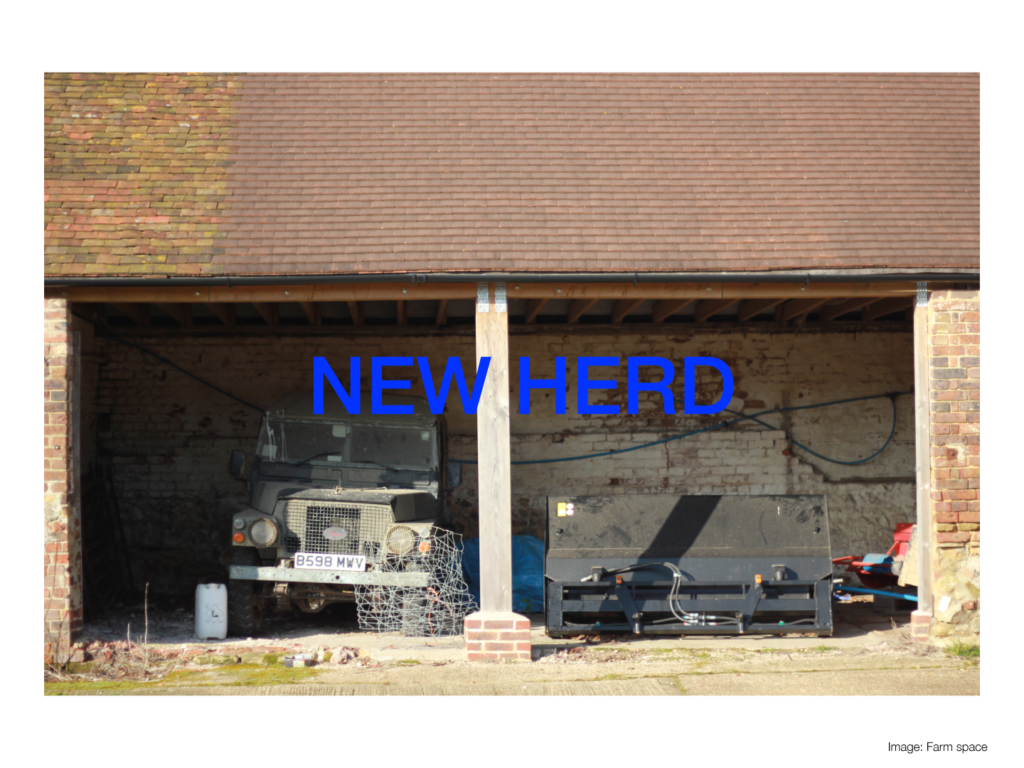Dewi is a designer who recently completed his BA in Design at Goldsmiths University, London. His approach to design is process driven, experimenting with people, location and material. Using his making abilities as a means to collect data, influencing the direction of his thoughts and practice.
His talk is based on the theme of urban and rural, discussing the similarities, differences, and the ability to bridge both together as one. He tells the story through objects he has designed, which has lead him to a new destination: living on a farm outside of London, a future farm for creativity.
Because…
We and Dewi had several chats before the Material conference about his ideas, background and where he wanted to take his project. We loved his ambitions and enthusiasm.
He is a young farmer, who’s pretty clued into technology, design and rapid prototyping. As a city dweller, we tend to think that urban areas are where the progress happens and the farms are the old way of life. Dewi set out to show us that’s the wrong way of thinking of things.
Today’s tractors probably have more technology in them than the average digital nomad! From onboard computers and GPS to track weather, boarders and growth, farmers are far from technologically illiterate.
Dewi’s school project was around the concept of a bailer to collect and make something new. This peaked our interest because when it comes to the Web and Materials, it is more than just a screen and keyboard. From 3D printers, CNC machines and drones, we can consider these to be Web-based peripherals like a laser jet printer.
Farm ➞ Web
When we think about the Web, Internet and technology, one of the things that comes to mind are throngs of freelancers and digital nomads sitting in hipster coffee shops in large metropolitan areas. While it is true that more than 50% of the world’s population live in cities, rural farm land covers 98% of Earth. So why are we focusing our idea of the Web and what it can do in that 2% area?
Tool sharing is a popular way of getting access to expensive equipment like laser cutters, 3D printers and others. Access is sometimes through community centres, schools, online services or clubs. Farms have engaged in tool sharing for a long time. Community labour efforts and communal equipment is hardly a new idea. What about bring more of the digital tools into a community that already understands the sharing part. What new abilities are gained from existing norms?
As Dewi was taking over an old cow shed, not to house cows or animals, but to make a new place for people to work together, he was mashing several new and old concepts together. Coworking spaces, community knowledge and tool sharing in a rural environment rather than urban, could produce a new way of looking at the Web. No more ‘find the nearest X’ or ‘like Uber for Y’ apps. That sort of thinking solve middle-class, metropolitan problems. With such a high proportion of our land being rural, how is the Web addressing this or how can it be more useful?
When Dewi was describing his new efforts, he framed it as creating A New Herd! Farmers know what it takes to manage this sort of community, tend to their needs and watch them grow. We are excited how the Web is a part of this and were it will lead.
You can view all the video recordings and subscribe to the Material podcast on the Material Archive site.
